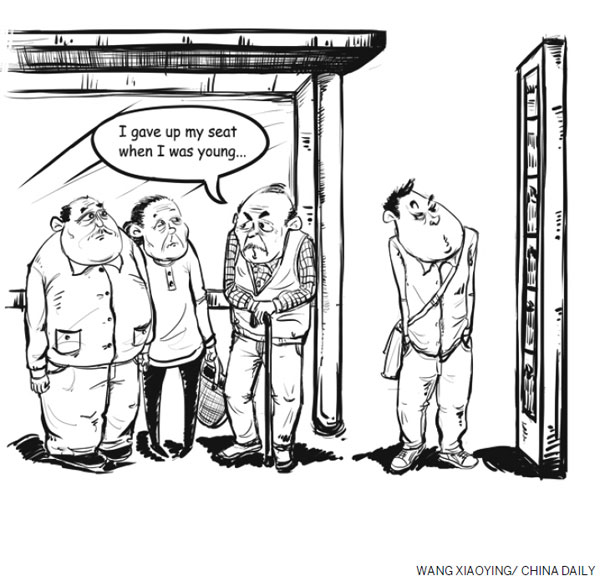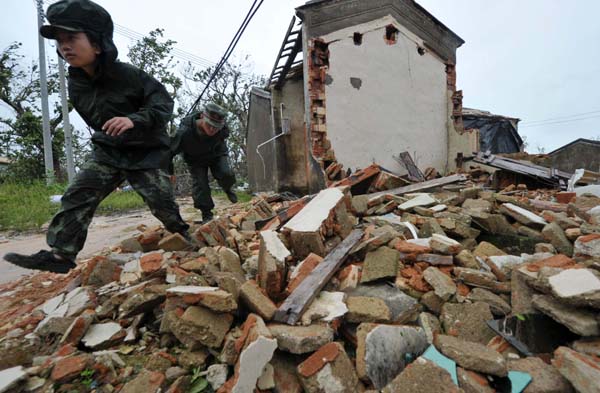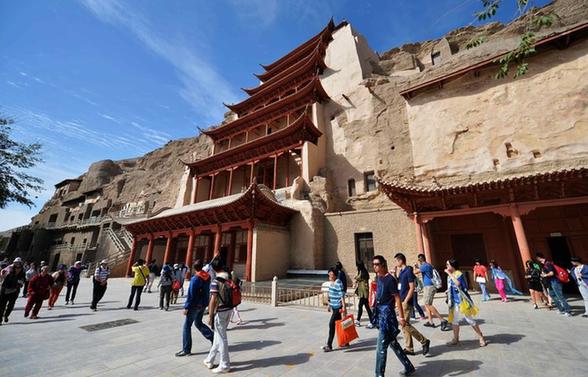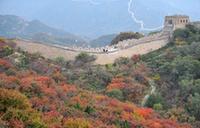Tear gas, pepper spray, feelings of anger and betrayal, crowds forced to run from riot police... and yet the protests retain that uniquely Hong Kong character.
Reporters and Hong Kong residents have shared their most surreal and charming experiences on the streets.
Perhaps it isn't actually anarchic but it is definitely one of the biggest protests in Hong Kong for years. And yet students - some of whom were at the vanguard of this movement - find time to sit down and do their homework. Richard Frost for Bloomberg News tweeted this picture of children doing just that.
 Students doing their homework in Hong Kong's street protest
Students doing their homework in Hong Kong's street protest
An entrance to the Causeway Bay MTR station was barricaded and emblazoned with signs shouting out for democracy. In the middle was a small cardboard sign - also written by the protesters: "Sorry for the inconvenience."

Hong Kong resident Collier Nogues, who took the picture, said it is "characteristic of the feeling everywhere I went this afternoon. Generous, polite."
 Always apologise for putting up a barricade and blocking access
Always apologise for putting up a barricade and blocking access
The humblest and most domestic of props became a protest icon after it was transformed into a shield against pepper spray and tear gas. The picture of a sole protester wielding his umbrella against the tear gas went viral online on Monday.
And when it began to rain on Tuesday, it was put to its secondary use as protection in wet weather. Residents also tweeted that protesters were distributing raincoats in Mong Kok. Police say umbrellas were also used by some protesters to threaten officers during Sunday night's unrest.
.jpg) How to deploy an umbrella in self defence
How to deploy an umbrella in self defence
The BBC has explained how the humble umbrella became a HK protest symbol.
Hong-Kong-based journalist Tom Grundy tweeted this picture of a protester proffering free shirt-fresheners. At times the temperature has been sweltering and amid the crowds things are bound to get a little bit sweaty.
 Shirt freshener anyone?
Shirt freshener anyone?
And while on the streets with the protesters, the BBC's Martin Yip witnessed volunteer armies spraying people with water to keep them cool and fresh.
Armies of water-sprayers cool things down in Causeway Bay
A picture on the live page of the South China Morning Post showed a sea of protesters who it noted had parted for the grass courtyard where Hong Kong's cenotaph is located. Protesters still obeyed signs telling them to keep off the grass at the monument, putting the "civil" into civil disobedience.
"Despite the crowds around the war memorial in Central, not one person is standing or sitting on the grass. There's a new cardboard sign over the usual sign telling people not to go on the grass," the Hong Kong-based paper wrote.
 File picture of Hong Kong's war memorial outside the old legislative council building - protesters stayed off the grass
File picture of Hong Kong's war memorial outside the old legislative council building - protesters stayed off the grass
The BBC's Saira Asher reports on how diligently the protesters cleared up after themselves. "The morning is being spent mostly removing rubbish left over from last night's huge crowd. Students are picking up cigarette butts and plastic bottles, others are distributing breakfast buns. That is why those on the street are being called 'the politest protesters' by some on social media."

Recycling has also been organised by those on the streets. Many agree that the world hasn't seen organised and tidy protests quite like this before.
This is echoed by the South China Morning Post in its live page when it wrote of a bizarre incident in Causeway Bay where a man pelted protesters with rotten eggs, telling them to "go back to class and stop blocking the roads". Protesters reportedly responded by cleaning up the mess.
Litter collection and recycling has been organised by those on the streets
Most witnesses agree that despite the clashes on Sunday night and the sheer anger at China's decision to restrict who can run to be Hong Kong's leader, the mood on the streets is largely peaceful and generous. There have been incidents of commuters and angry local residents exhorting protesters to give up and leave - a reminder that not all of Hong Kong's residents agree with the demonstrations.
But for the moment it looks as if the Hong Kong protesters will keep on tidying up, creating lanes to enable smooth passage, doing their homework and of course making the demands they see as crucial to the future of Hong Kong.













